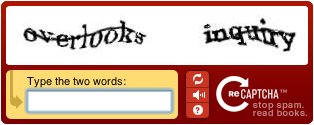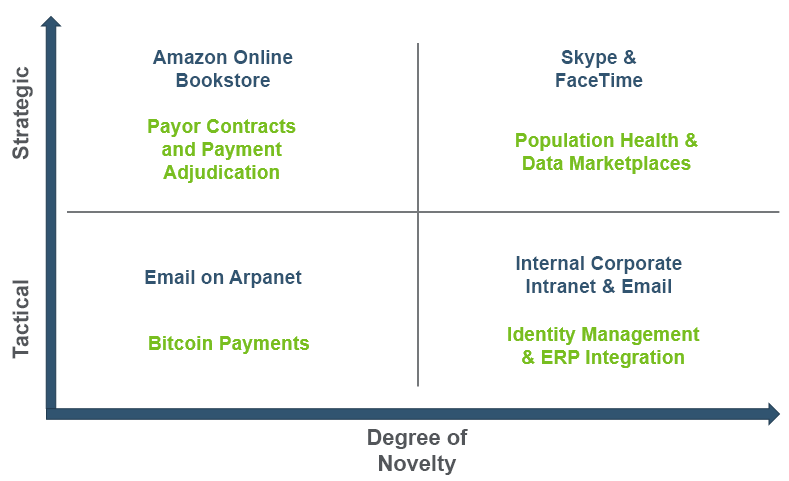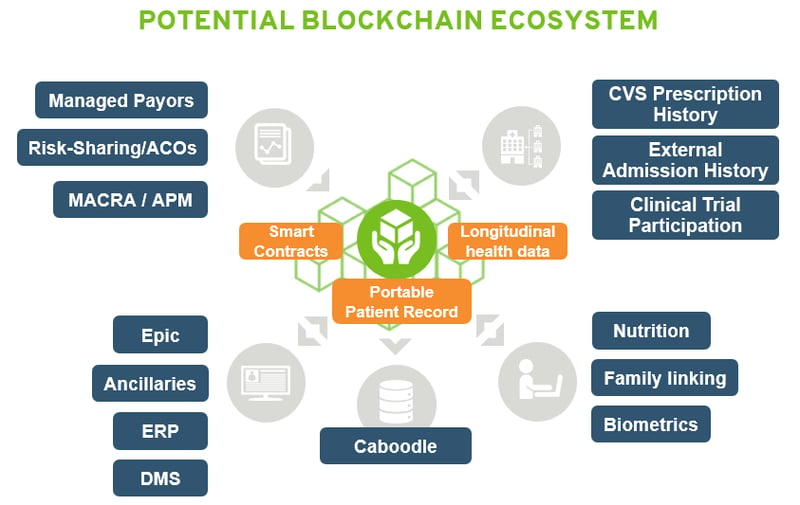If you spent the holidays shopping online for gifts like I did, you might remember seeing a few of these:

This little screen protects our identity when making online transactions. It looks benign, unassuming, and more often than not, we robotically re-enter the wavy content without giving it a second thought. But in the early stages of the internet, an electronic and secure payment mechanism like this would have been hard to visualize.
Many people in the healthcare industry treat blockchain in a similar way. They’ve heard it discussed as a solution to interoperability and security, but beyond that, struggle to visualize its implementation. But blockchain – if it were fully understood and utilized – could be the key to eliminating certain organizational costs (and maybe even converting them to revenue).
 For instance, consider: What if HIM departments were no longer asked to be the custodian of ROI requests and chasing down request processing fees? What if you no longer had to pay for the transaction fees of HIE, supply chain, and clearinghouse solutions? What if you could eliminate the cost of cloud storage for population health? These are the types of questions blockchain evangelists are solving.
For instance, consider: What if HIM departments were no longer asked to be the custodian of ROI requests and chasing down request processing fees? What if you no longer had to pay for the transaction fees of HIE, supply chain, and clearinghouse solutions? What if you could eliminate the cost of cloud storage for population health? These are the types of questions blockchain evangelists are solving.
What is blockchain anyway?
First, let’s start with a simple definition of blockchain. Blockchain is a database technology that was developed in 2008 as the foundation for the exchange of Bitcoin. With blockchain, records are chronological, transparent, and secured cryptographically on a digital ledger that stores information as a growing list of “blocks” that cannot be changed or deleted once recorded. The database is built via a consensus algorithm, which is a mechanism where all of the peers on the network automatically validate and confirm the latest block entries, which prevents any single peer on the network from defrauding or altering data after-the-fact.

The benefits of blockchain in healthcare are relatively straightforward. To begin with, blockchain is secure – both transparent (for the use of ACOs and HIEs) and anonymous (to comply with HIPAA). The system is decentralized, meaning no trusted intermediary or cloud storage fees are necessary. And users can easily verify where entries came from, with permanent, append-only data in the chain.
What blockchain means for the future of healthcare
The applications of blockchain in healthcare are numerous. Some are tactical and localized, like accepting Bitcoin payments at your clinics or integrating the blockchain with your ERP identity management and supply chain management solutions. Others are strategic and collaborative, like real-time payment adjudication and ‘smart contract’ arrangements with managed payors or a transparent and pseudonymous population health database for your shared clinical network.

Of course, in the nascent era of blockchain, there are more questions than answers about how you should think about leveraging this technology. For now, we recommend focusing on three core questions:
1. What processes do you have that rely on costly external intermediaries?
For instance, are you paying for third-party storage to support your population health data?
2. Could blockchain help eliminate these costs?
In the case of many transaction fees, clearinghouse solutions, and cloud storage costs, blockchain could significantly reduce your costs. And of course, there are opportunities to use blockchain to realize greater revenue via smart contracts and better use of patient data.
3. How can Nordic help?
We have certified blockchain experts on staff who can help you dip your toe into this technology and explore how it could help you reduce cost.
If you’d like to connect, we would love to talk with you about this.





